China is one of the most fascinating places I’ve ever been.
As one of the largest countries in the world, it has incredibly diverse landscapes, food, people, history, and development. With a recorded history dating back over 3000 years, it’s a country with fascinating heritage and culture at every turn.
When I last visited, it was around the time of Chinese New Year and I spent a month travelling across the country. If you get the chance to travel to China at that time of year, I’d wholeheartedly recommend it — it was so much fun! There were decorations everywhere, fireworks filled the sky, and everyone was in a joyful mood.
Of course, this means that you’ll likely need to book things like transport and accommodation ahead of time before they sell out, but it was so worth it. One of my favourite memories was celebrating Chinese New Year in Shanghai over hotpot with new local friends.
Regardless of when you do end up visiting, however, know that travel in China takes some planning.
This is predominantly due to the visa requirements and application process, which can be onerous — yes, even when visiting as a tourist. It will differ depending on where you’re from, but odds are: it’ll be a pain in the ass. I needed to provide several forms and documents, proof of onward tickets, and even a list of every country I’d visited over the past 10 years. As a travel writer who travels full-time, that last part made me want to cry — I’d been to 80 countries!
Even though the visa application is slightly more difficult than other countries, I promise you it’s worth it, and especially if you go through the process and score a long-term multi-entry visa. A standard single or double-entry tourist visa lasts 15-60 days and costs around $80, but for around twice the price, multi-entry options are available for some passport holders that give 60 days per entry for three or five years. Not a bad deal at all, to be able to return for half a decade and see more of this amazing country!
Another important thing you should do ahead of your trip to China is download the WeChat app. This is the primary messaging app in China and you’ll use it regularly while in the country. You should also download a VPN ahead of time, but I’ll get to that later in the post.
For now, get ready to learn more about China, what you can expect from a trip there, and how much it costs. If you’re happy to step a little outside of your comfort zone, you’ll have an incredible experience: I met some of the loveliest people while I was there, and crossed some major things off my bucket list.
Go in with an open mind, be ready for some adventure and unpredictability, and you’ll have the time of your life!
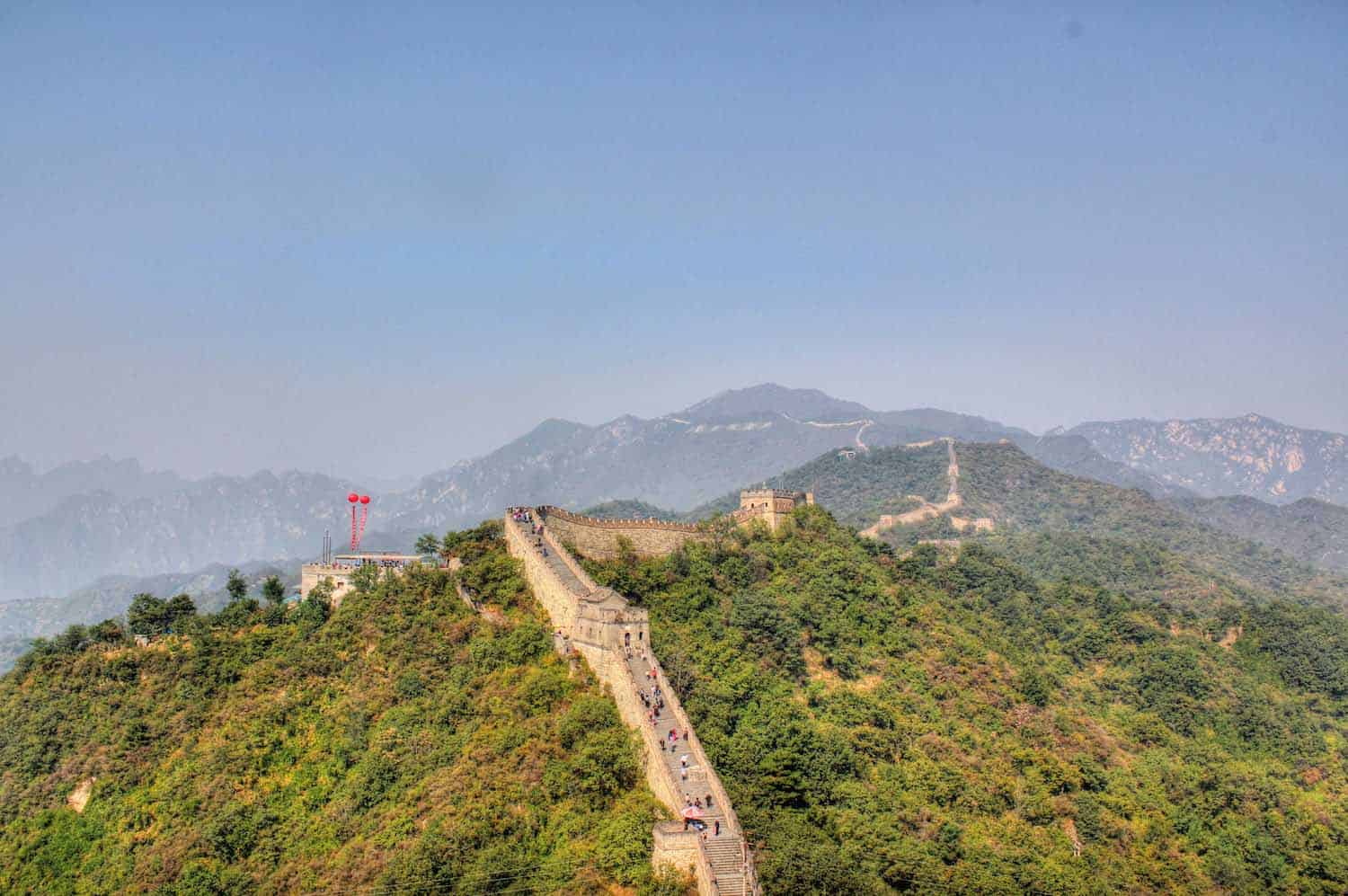
What’s Included in this Post
This budget breakdown covers how much I spent on accommodation, transportation, activities, and food while I travelled around the country.
I’ve not included my flights into and out of China as this is going to vary significantly based on where you’ll be arriving from.
The amounts in this guide are listed in U.S. dollars, simply because the vast majority of my readers are from the U.S. I also included some prices in Chinese yuan (CNY), as this is the local currency that you’ll use day to day.
While prices have risen a little since China reopened its borders post-pandemic, it’s not as noticeable as most other parts of the world. Sure, you can spend a fortune on travel here if you want to, but as I’ll show below, you definitely don’t have to. Let’s get started!
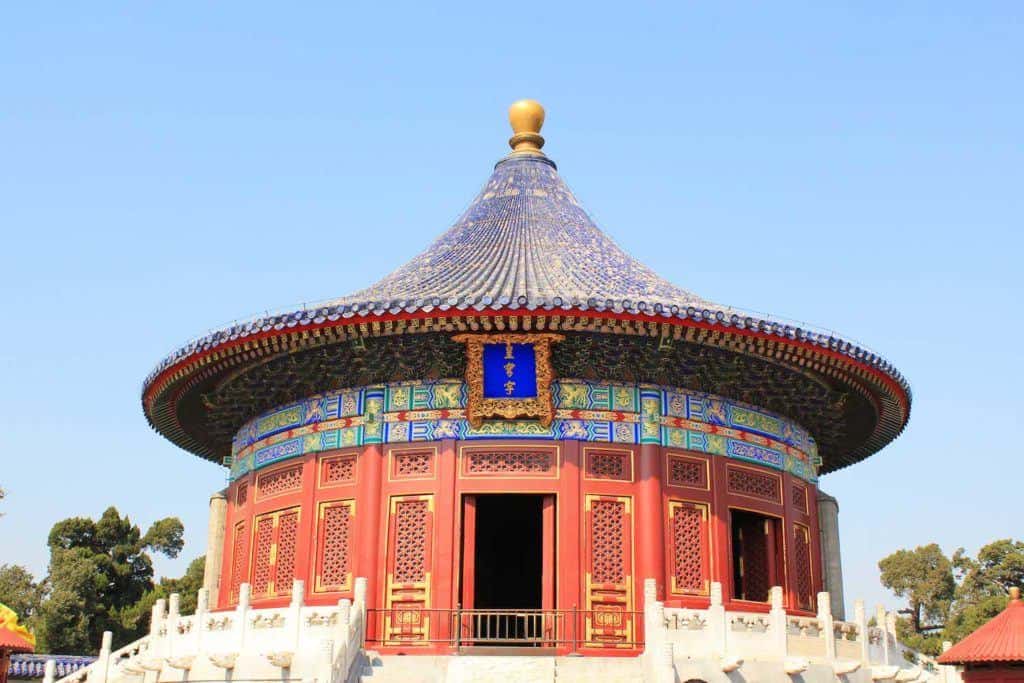
The Cost of Accommodation in China
Finding places to stay on a mid-range budget in China is fairly easy. In terms of what to look out for, the two most important aspects are the location and staff, especially if you’re a foreigner. Many Chinese cities are very large and heavily populated, so it really helps to be close to the things you want to see. I found that having staff who speak English and can offer good recommendations and advice makes a huge difference as well.
Guesthouses, hostels, and homestays usually start around $40 (289 CNY) per night, while good mid-range hotels cost $70-80 (505-578 CNY) per night, often including breakfast. That said, expect to pay a bit more than that in the most popular destinations like Shanghai and Beijing.
Here’s a list of my favourite accommodation options in China:
Beijing — Jingshan Garden Hotel ($118 a night)
You can’t get much better than a hotel located in a traditional Chinese hutong (narrow alleyway) alongside Jingshan Park and right behind The Forbidden City! Even though you’re so close to many of Beijing’s biggest attractions, there’s still a very local feeling and flavour. In addition to having such a great location, the staff were very welcoming, sharing a guide to China, offering great suggestions, and calling ahead for information at tourist sites to help me make the most of my stay. The room itself was comfortable and clean, and when I didn’t feel like leaving the hotel one rainy evening, the traditional Chinese dishes at the attached restaurant were delicious (there was also Western fare if I’d wanted it).
Shanghai — Kevin’s Old House ($109 a night)
What I loved about Kevin’s Old House was how unique it was! In a world where hotel chains vie to offer generic modern design and high-tech features, Kevin’s stands out from the crowd. It’s cosy and eclectic, and stepping inside the building leaves you feeling as though you’ve walked straight into 1930s Shanghai. It’s an experience you won’t find anywhere else in the city. It’s in an excellent location, too, close to all of Shanghai’s best restaurants and bars. The staff were wonderful, the breakfasts delicious, and I hugely appreciated having a washing machine in my room, too!
Yangshuo — The Bamboo Leaf Yangshuo ($60 a night)
Yangshuo has some incredible, stunning landscapes coupled with a smaller town feeling, and Bamboo Leaf is the perfect base for all your explorations. The facilities and rooms were beautiful and clean, including the onsite outdoor swimming pool with a stunning backdrop of the Yangshuo mountains. The onsite restaurant had delicious food in generous portions, but most of all, the staff really went out of their way to offer incredible service and hospitality. They were all incredibly knowledgeable about the area and went as far as sending location links through WeChat (messaging app) for the places I wanted to visit! Considering not everything in Yangshuo is properly marked, this was super helpful. It’s in a lovely quiet area away from the tourist centre: you can walk to the main market in about twenty minutes, but the hotel offers a free shuttle to and from town, plus bikes and e-bikes you can hire.
Hangzhou — Rock&Wood Cozy House ($100 a night)
Hangzhou was one of my favourite cities in China. There was just something endearing about walking down the Ancient Qinghefang Road or taking a paddle boat on scenic West Lake, and I was very happy to be staying at this cute guesthouse while I was in town. It’s in a quiet residential area only a few minutes walk from the tranquil lake, but still within easy reach of all the sights and attractions downtown. The host (Sally) couldn’t have done more for me, and had endless great sightseeing tips to offer, as well as cooking delicious Chinese and Western breakfasts on alternate days. The room was absolutely lovely, with cozy wooden decor and furniture and a super-comfortable bed. Needless to say, you’ll leave your stay here feeling both physically and mentally refreshed!
Chengdu — Buddha Zen Hotel ($74 a night)
Home of the famous pandas, Chengdu is the place to go to see these beautiful creatures up close. Beyond this, there are tons of temples to explore and authentic Sichuan cuisine to enjoy. I highly recommend staying at Buddha Zen Hotel while you’re there: a lovely hotel with a real “old world” feel, it’s it’s in a great neighbourhood full of traditional buildings, many of which have been converted into adorable cafes and restaurants around to help bring out your inner foodie. It’s on a quiet street, so you’ll still get a good night’s sleep, and you’re in good hands with the owner who will help make your stay comfortable, whether you need transport, local recommendations, or advice for how to get around.
Nanjing — Janling Hotel ($70 a night)
For many centuries, Nanjing was the capital of China. This makes a visit to this historical city worth it during your travels, especially considering it’s only a few hours from Shanghai. Jinling Hotel was the ideal place to stay while I was there, in an unbeatable location right in the heart of the city, and really close to a metro station so I could easily get to anywhere further afield that I needed to go. I found this hotel to be one of the most foreigner-friendly places I came across in China, with English-speaking staff and a great range of Western and local options in the restaurant. Reasonably priced and kept immaculately clean, I’d be only too happy to stay here again.
Xi’an – Eastwood Inn Xi’an ($45 a night)
If seeing the Terracotta Army Warriors (soldier figures that accompanied the tomb of China’s first emperor) intrigues you, then you’ll definitely want to pay a visit to the city of Xi’an. And you can stay at this lovely, affordable homestay while you’re there! You’re within walking distance of both a metro station and the Wenchang Ancient City Wall. My room was clean, with a comfy bed (not always the case in China!) and its own private bathroom. The staff were great, with plenty of recommendations of where to go and what to do, and the front desk is manned 24/7 in case of any issues. This is a comfortable, conveniently located, affordable homestay that’s perfect for a couple of days in Xi’an!
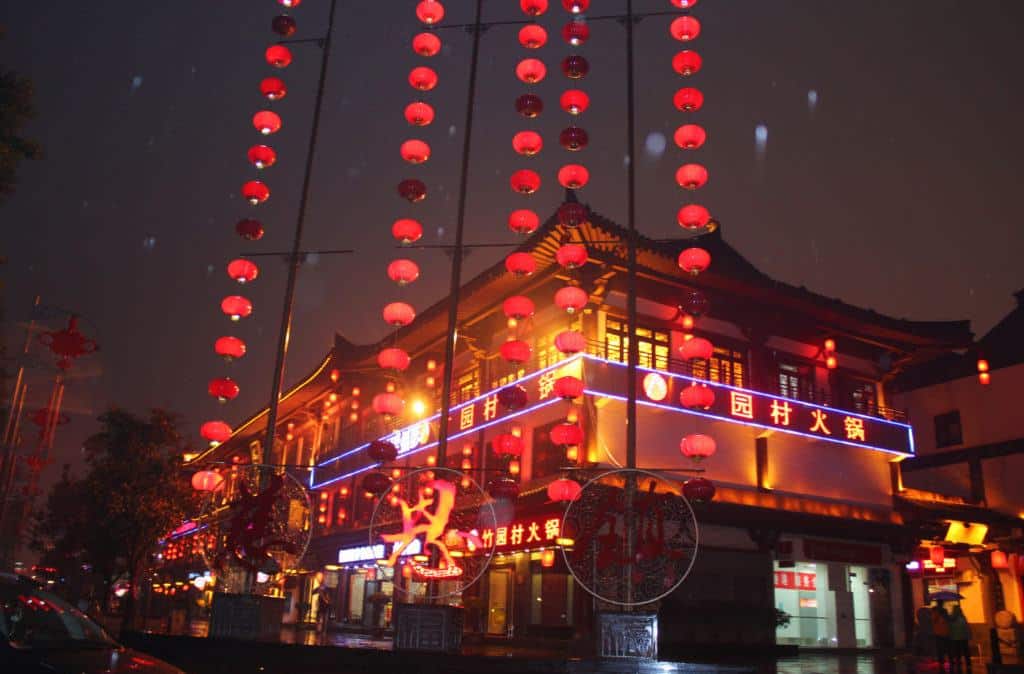
The Cost of Transportation in China
Transportation in China was some of the best I’ve ever experienced in all of my travels so far. It was fast, easy to navigate, and ran on time. Unlike some other countries where I’ve had what feels like endless stopovers and long, bumpy drives to get anywhere, moving around China felt like a breeze by comparison.
Here are the most common forms of transportation in China:
Underground Metro — If there’s an underground metro system available, this is one of the fastest, easiest and cheapest ways to travel around any city in China. I used the metro system in Beijing, Shanghai, and Hangzhou, and it was always very quick and efficient. You can expect to pay around $0.40-1.25 (3-9 CNY) for a metro ride depending on the distance.
Most cities also offer 1-7 day passes which are often good value, especially anywhere that you’ll be regularly using the metro to get around. For example, the fare for a 1-day pass in Shanghai was $2.50 (18 CNY), while the fare for a 3-day pass was $6.25 (45 CNY). Definitely pretty reasonable!
Taxis/Didi — I used taxis a couple of times and if I was with a local friend of mine, we would take Didi, which is a Chinese Uber equivalent. I wouldn’t rely on Didi unless you know Mandarin or are with people who live there because it doesn’t always work with foreign credit cards. That being said, taxis are everywhere and really easy to hail in major cities, but not many taxi drivers speak English, so have a translator app handy or name a major landmark that you’re heading towards that they would recognize.
Each Chinese city has a different base rate for taxis. Bigger cities like Shanghai and Beijing start at $1.95 (14 CNY) for the first 3km, while other cities have a lower starting rate of around $1.10-1.40 (8-10 CNY). To give you an idea of a full taxi ride fare, from Beijing airport to the city centre (about a 40 minute drive) costs around $18-21 (130-150 CNY).
Note that taxis rarely accept foreign credit cards, so always have cash in the form of small bills on hand to pay your driver.
Train — China has one of the biggest high-speed rail networks in the world, which links nearly every town and city. I took the train between most of the cities I went to, and it was always very reliable, quick, comfortable, and straightforward. Not to mention, I thought the prices were quite reasonable.
As a tourist, you need to verify your ID when you pick up a ticket. So once I booked my tickets through 12Go Asia, this only meant that my ticket was issued, but it didn’t mean I had the ticket in hand. I needed to go to the train station ticket office to show my booking voucher and passport, and then be given my ticket. I’d recommend booking train tickets at least 3-4 days in advance.
Note that I traveled second-class on high-speed trains where possible. There are often cheaper seats available on the slow trains, but they usually take a lot longer to get where they’re going.
Here were some of the routes I took and their respective prices:
- Nanjing to Hangzhou: $23 (167 CNY)
- Hangzhou to Shanghai: $10 (73 CNY)
- Beijing to Nanjing: $72 (520 CNY)
- Shanghai to Guilin (sleeper): $84 (607 CNY)
Flights — Even though China is a large country, and it might feel like taking flights to get around makes sense, in most circumstances taking the train is better because of its high speed, punctuality, and lack of lengthy check-ins and wait times. Not to mention, it’s often cheaper to take the train anyway. In some cases, though, taking a flight can be an easier option, so here are some of the routes and their respective average prices from Skyscanner:
- Beijing to Shanghai — $111 (802 CNY)
- Shanghai to Guilin — $110 (795 CNY)
- Guilin to Chengdu — $102 (737 CNY)
- Chengdu to Xi’an — $100 (723 CNY)
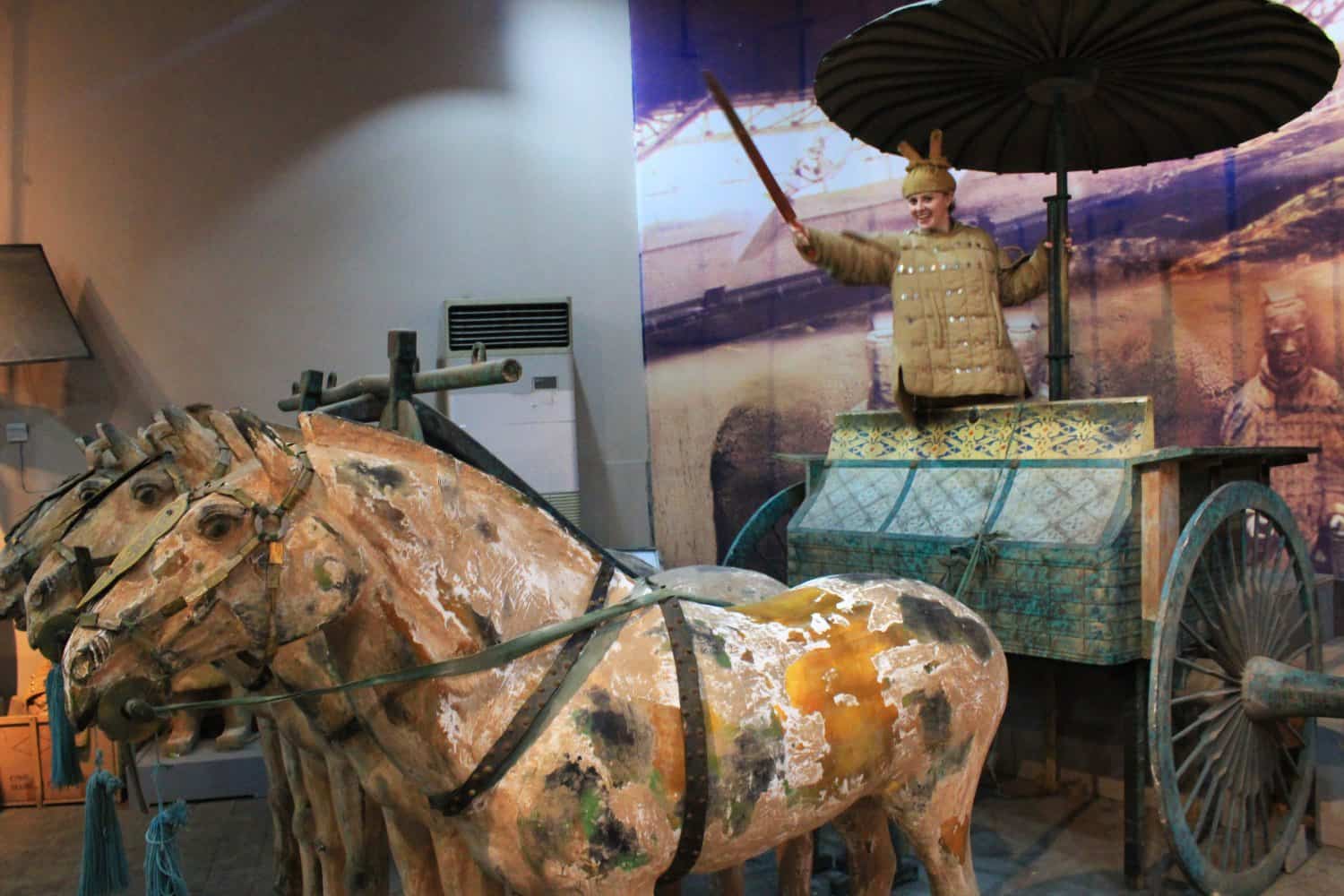
The Cost of Food in China
Summarising the food scene in China isn’t easy. With thousands of years of cultural history and millions of square miles of geography, you could spend a lifetime trying to eat every dish in the country and still not even come close to finishing the job.
As you might expect, the local climate and culture has a big impact on the kinds of food you’ll find in each area. There are eight major culinary regions in the country, but even those are split up into endless local variations. While it’s true to say that rice or noodles are a staple in much (although not all) of the country, after that, all bets are off as to what you might find on the menu.
The good news is that you don’t have to visit every far-flung corner to enjoy its food: the major cities have restaurants that cover every cuisine imaginable, both from within China and much further afield.
Let’s start with hotpot and bubble tea, something I could happily have eaten every day. There’s something really special about going to eat hotpot with a group of friends, and I just love the communal aspect of it. It’s less of a meal and more of an experience (although don’t get me wrong, the food part is good too!).
If you’re unfamiliar with hotpot, it’s typically a simmering pot of seasoned broth, paired with thinly-sliced meats, veggies, mushrooms, noodles and more. You essentially cook and season your food by putting it into the pot, dipping it in a selection of sauces and then digging in. If you go with a decent size group, then you’ll probably pay around $15-20 (108-144 CNY) per person for a hotpot meal with a couple of drinks.
One of my other favourite food experiences was eating Peking Duck in Beijing, a dish that goes back as the Imperial era. Usually a Peking Duck meal includes thin slices of duck, wraps, and add-ons. If you go as a group, you’ll likely end up with an entire duck to share, so if you’re going alone or with a friend, just make sure you can order a smaller amount. You’ll likely pay around $10-12 (72-87 CNY) per person for this.
If you’re heading to Guangzhou or elsewhere in the Cantonese part of China, expect dim sum to feature heavily on your list of dining highlights. Again, it’s best experienced with others, since it means you’ll get to try more of the vast selection of small steamed or pan-fried dumplings, buns, and rice noodle rolls on offer. Expect to pay around $2 (15 CNY) per dish.
You’ve likely heard of kung pao chicken before, and maybe even tried it back home, but it’s a whole different experience when you’re eating it in Chengdu or somewhere else in the Sichuan region that it originated. It’s not a dish for the faint-hearted, full of heat from the dried chillies, a numbing sensation from the region’s famous peppers, and big, complex flavours from the sauce. If you can handle the intensity, though, it’s absolutely delicious! Served with rice, it’s often quite cheap as well: you’ll pay around $4-7 (30-50 CNY) for it.
The Shangdong region is famous for its seafood, and while you should definitely try some of the higher-end dishes like cong bao youyu (stir-fried sea cucumber) and weihe clam noodles, even the cheap eats are a culinary delight. My favourite was scallion pancakes, a low-cost yet delicious option for breakfast or lunch in particular. The crispy dough and delicious zing of the scallions meant that even though one really was enough, I often went back for a second anyway! The low prices helped with that decision: I never paid more than $1.40 (10 CNY) for one.
Speaking of cheaper eats, especially for lunch, I often grabbed something from a street vendor or at a food market, where a steamed bun, fried rice, or a dish of chow mein noodles would typically only cost around $2-3 (15-22 CNY).
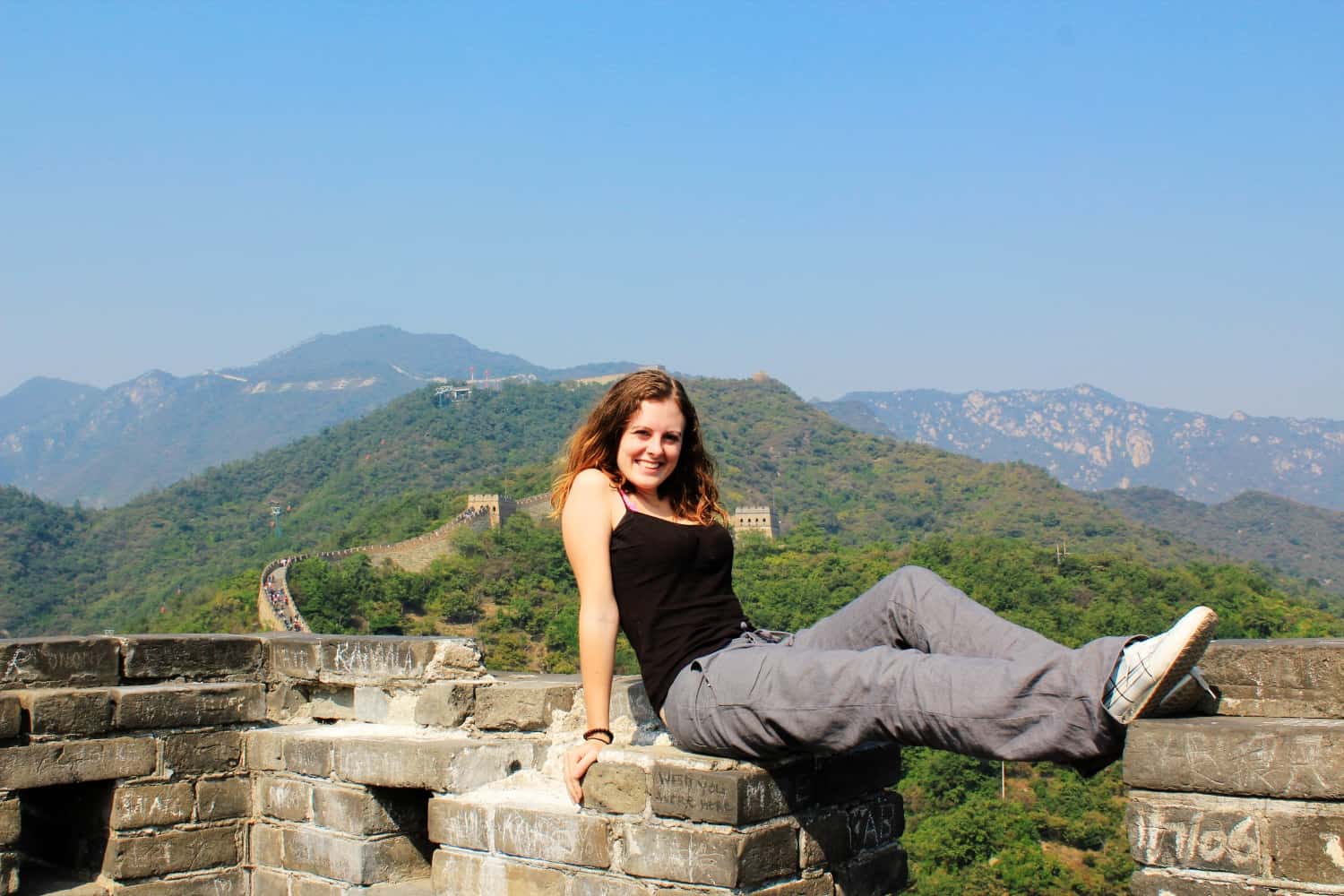
The Cost of Activities and Entrance Fees in China
China is certainly the land of sightseeing. I’ve wanted to see The Great Wall of China for as long as I can remember, and it blew me out of the park. It was a beautiful sunny day in January and I could see the wall stretch on and on and thought to myself how lucky I was to see one of the wonders of the world.
My best piece of advice would be to take a weekday tour that leaves early in the morning from Beijing, because The Great Wall itself is about a two-hour drive away from Beijing. It’s possible to take public transit, but I definitely saved time and had a smoother experience with a tour. We left around 6 a.m. and got there before 9 a.m., and there was a moment when we were the only seven people or so on that section of the wall—it was pure magic and also very rare. So trust me, the earlier you can get there the better, because the crowds start to roll in around 10 a.m.
I booked through my hotel, and it cost around $40 for the tour which included entry and round-trip transportation from Beijing. Make sure to ask the people at your accommodation about tour companies because they will have a better idea of the best options, but do confirm whether the price includes transport, entry, cable car and toboggan tickets, or just some of those things.
Here’s a breakdown of some popular attractions in China and their respective costs:
- (Beijing) The Great Wall of China: $6 (45 CNY) entry ticket, plus $14 (100 CNY) one way/$19.50 (140 CNY) return for the cable car/toboggan
- (Beijing) The Forbidden City: $8.40 (60 CNY) (April 1 – October 31) or $5.50 (40 CNY) (November 1 to March 31)
- (Beijing) Summer Palace: $8.40 (60 CNY) (April 1 – October 31), $2.80 (20 CNY) at other times
- Chengdu Research Base of Giant Panda Breeding: $7.70 (55 CNY)
- Zhangjiajie National Park: $31.50 (227 CNY) (March 1 – November 30) or $20.50 (147 CNY) (December 1 – February 28)
- (Shanghai) Yu Garden: $5.50 (40 CNY) (April 1-June 30 and September 1-November 30), $4.20 (30 CNY) at other times
- (Hangzhou) West Lake: FREE
- (Xi’an) Emperor Qinshihuang’s Mausoleum Site Museum: $16.70 (120 CNY)

Miscellaneous Costs
Chinese SIM card: I don’t know about you, but one of my least favourite aspects of arriving in a new country is having to figure out how to get connected. Specifically: buying a local SIM card so that I have data to use while I’m in the country.
There’s locating a store that will sell you one, language barriers to deal with, various forms of ID you might need to bring, scams to navigate, and… well, it’s a headache.
This year, I’ve started using Airalo, which sells local e-SIM cards for travellers, and it’s absolutely improved my travel experience. What this company allows you to do is to buy an e-SIM online before you arrive in China, and then as soon as you land in the country, you can switch on your data and start using it. It’s worked flawlessly for me and I’ll never go back to physical SIM cards. All you need is an e-SIM-compatible phone (all iPhones are, and most Androids). You’ll pay $5 for 1 GB of data, $11.50 for 3 GB, or $16.50 for 5 GB for China, with other data amounts available, and can top-up through the Airalo app.
Virtual Private Network (VPN): To get a full range of internet access in China and circumvent the country’s internet censorship, you’ll need a VPN. Believe me, it’s worth it. You can’t access Google or most social media accounts without one. I was travelling through China for one month, so I got the 1-month plan with ExpressVPN which costs $12.95.
Travel insurance: If you’ve read any other posts on Never Ending Footsteps, you’ll know that I’m a great believer in travelling with travel insurance.
As someone who works in the travel industry, I’ve seen far too many Go Fund Me campaigns from destitute backpackers that are unexpectedly stranded in a foreign country after a scooter accident/being attacked/breaking a leg with no way of getting home or paying for their healthcare. These costs can quickly land you with a six-figure bill to pay at the end of it.
In short, if you can’t afford travel insurance, you can’t afford to travel.
Travel insurance will cover you if your flight is cancelled and you need to book a new one, if your luggage gets lost and you need to replace your belongings, if you suddenly get struck down by appendicitis and have to be hospitalised, or discover a family member has died and you need to get home immediately. If you fall seriously ill, your insurance will cover the costs to fly you home to receive medical treatment.
I use SafetyWing as my travel insurance provider, and recommend them for trips to China. Firstly, they’re one of the few companies out there who will actually cover you if you contract COVID-19. On top of that, they provide worldwide coverage, don’t require you to have a return ticket, and even allow you to buy coverage after you’ve left home. If you’re on a long-term trip, you can pay monthly instead of up-front, and can cancel at any time. Finally, they’re cheaper than the competition, and have a clear, easy-to-understand pricing structure, which is always appreciated.
With SafetyWing, you’ll pay just $1.50 a day for travel insurance.
How Much Does it Cost to Travel in China?
It’s time to tally up all of my expenses to see my total travel costs!
- Accommodation: $83 per day
- Transportation: $6 per day
- Food: $33 per day
- Activities/Entrance Fees: $24 per day
Average amount spent in China: $146 a day!







I visited the Temple of Heaven on a day when nearly no one was there. Of course, it was the dead of winter also. Have a pic where I’m standing on the mound clapping and listening to the sound….
Great post, great pictures
Gorgeous photos Lauren! The colors are so vivid!
I feel like I am kind of an expert when it comes to showing up in places during their “busiest time EVER” so I totally empathize with you, Lauren!
When I went to the Temple of Heaven it was also colder than cold December and there were still these precious senior citizens out there, ballroom dancing the day away!
The echo chamber didn’t work for me either. Maybe it’s all a sham?
I just spent a 20 hour layover in Beijing and loved the Temple of Heaven. WhenI went there were a ton of old people around the park. Some were working out (aerobics, badminton, kicking a feathery ball), others playing cards, some were dancing in exotic costumes and my absolute favourite, about 50 of them chanting these jawdroppingly beautiful songs. It was freezing at 8 am and they were all so active!